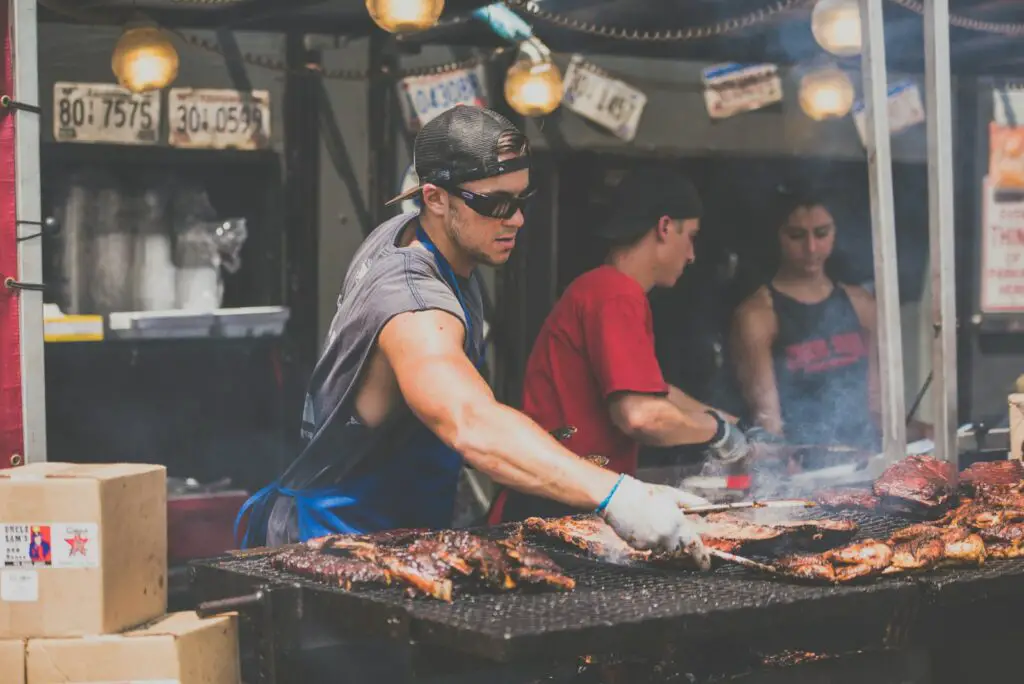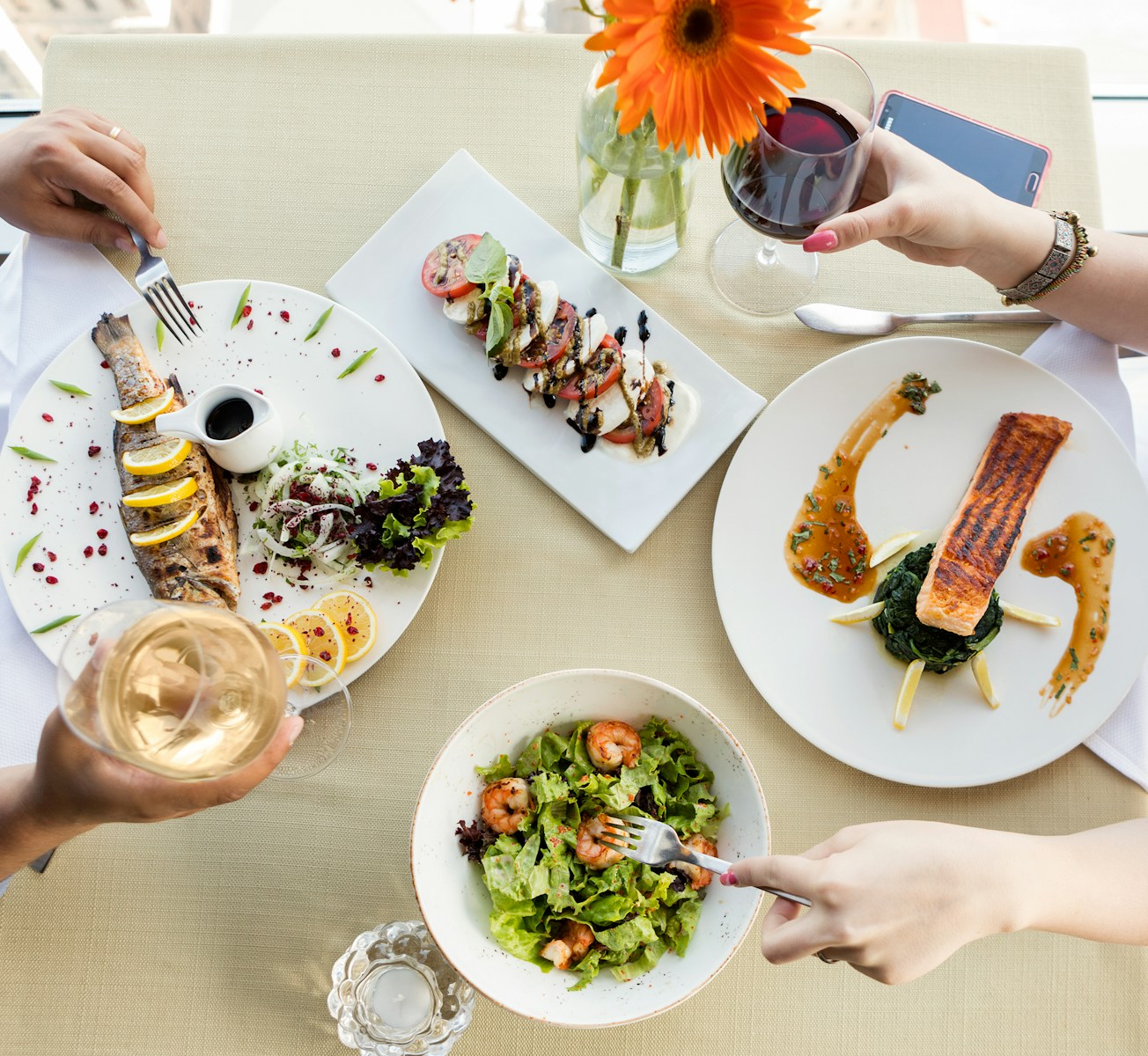Traveling for culinary adventures offers a gateway to discovering the world’s diverse food cultures and traditions.
The experience transcends merely tasting new dishes; it’s about immersing yourself in the local food scene, connecting with people, and learning the stories behind the flavors. In this article, we will guide you through how to embark on a culinary journey, from planning and researching to savoring each bite.
Embrace the Local Food Culture
Every destination has its culinary identity, shaped by its history, geography, and cultural influences.
Embracing this local food culture means more than just eating; it involves understanding the traditions and practices that make the cuisine unique. Start by exploring local markets and street food, which often provide the most authentic experiences. Engage with local food vendors, ask questions, and be open to trying dishes you may not have encountered before.

Personal Experience: A Culinary Journey Through Italy
During a recent trip to Italy, I immersed myself in the local food culture by staying in a small Tuscan village.
Each day began with a visit to the local market, where I engaged with farmers and artisans about their produce and products. From tasting freshly made cheeses to learning about the art of pasta making, each interaction enriched my culinary experience. The highlight was participating in a traditional Italian cooking class, where I learned to prepare classic dishes using seasonal ingredients. This hands-on approach deepened my appreciation for Italian cuisine and its rich cultural heritage.

Research and Plan Your Culinary Trip
Before embarking on your culinary adventure, thorough research is essential. Identify destinations renowned for their food culture and specialties.
Look for local food festivals, cooking classes, and guided food tours that can enhance your experience. Online travel forums, food blogs, and social media platforms are valuable resources for discovering hidden gems and gaining insights from other travelers.
When planning your trip, consider the best time to visit. Many regions have specific seasons for particular foods or festivals, and aligning your travel dates with these events can enhance your experience. For example, visiting Japan during cherry blossom season offers the chance to enjoy sakura-themed dishes and beverages.
Participate in Local Cooking Classes
One of the most rewarding ways to delve into a destination’s cuisine is by participating in local cooking classes.
These classes offer hands-on experiences and insights into traditional cooking techniques and recipes. Look for classes that are taught by local chefs or culinary schools to ensure authenticity. Many cooking classes also include market tours, where you can learn about local ingredients and how they are used in various dishes.

Cooking classes provide a unique opportunity to engage with locals and gain practical knowledge about their food culture. Whether you’re learning to make pasta in Italy or mastering the art of sushi in Japan, these experiences will enrich your understanding of the cuisine and give you skills to recreate the dishes at home.
Explore Street Food and Local Markets
Street food and local markets are essential components of any culinary adventure. They offer a glimpse into the everyday food culture of a destination and allow you to taste a variety of dishes in one location. Markets are also great places to find fresh ingredients and local specialties that may not be available elsewhere.
When exploring street food, be adventurous and try dishes that might be unfamiliar. Street vendors often serve authentic and flavorful foods that reflect the true essence of the local cuisine. Don’t be afraid to ask for recommendations or seek out popular stalls that are frequented by locals.
Dine at Renowned Restaurants
While street food and local markets provide authenticity, dining at renowned restaurants can offer a different perspective on a destination’s cuisine. High-end restaurants often showcase the best of local ingredients and culinary techniques, providing an elevated dining experience.
Research and make reservations at top-rated restaurants well in advance, as they can be popular and fill up quickly.
Eating at renowned establishments allows you to experience innovative and artistic presentations of local dishes. It also provides an opportunity to see how chefs interpret traditional recipes with modern twists, giving you a broader understanding of the local food scene.
Engage in Culinary Tours
Culinary tours are guided experiences that offer structured exploration of a destination’s food culture. These tours can range from walking tours through food districts to multi-day gastronomic journeys.
They often include visits to restaurants, markets, and food festivals, providing a comprehensive overview of the local cuisine.
Engaging in culinary tours can enhance your experience by providing insider knowledge and context about the dishes and ingredients you encounter. Tours are led by knowledgeable guides who can offer valuable insights and recommendations, making your culinary adventure more informative and enjoyable.
Culinary Destinations to Explore
When planning a culinary adventure, consider destinations renowned for their vibrant food scenes. These locations offer everything from street food markets to Michelin-starred restaurants. Each city or region has its unique flavors and specialties, making them a treasure trove for food lovers.
1. Tokyo, Japan
Tokyo boasts an unparalleled food scene with everything from sushi and ramen to kaiseki dining. The city is home to more Michelin-starred restaurants than any other place in the world.
2. Paris, France
Paris is famous for its pastries, cheese, and wine. A culinary tour here can include classic bistros, patisseries, and high-end dining experiences.
3. Bangkok, Thailand
Known for its street food, Bangkok offers dishes like pad Thai and tom yum goong. Markets and street vendors provide a vibrant culinary experience.
4. Barcelona, Spain
Barcelona combines traditional Catalan cuisine with innovative tapas and seafood dishes. The city’s food markets, like La Boqueria, are must-visits.
5. New Orleans, USA
New Orleans is celebrated for its Creole and Cajun cuisines. Dishes like gumbo, jambalaya, and beignets are integral to its food culture.
6. Istanbul, Turkey
Istanbul’s cuisine blends Middle Eastern, Mediterranean, and Central Asian influences. Try kebabs, mezes, and baklava for a taste of the city’s diverse flavors.
7. Florence, Italy
Florence is renowned for its Tuscan cuisine, including dishes like ribollita and Florentine steak. The city also offers excellent gelato and wine.
8. Oaxaca, Mexico
Oaxaca is known for its moles and traditional Mexican cuisine. The city’s markets and street food offer a deep dive into authentic Mexican flavors.
9. Mumbai, India
Mumbai offers a rich variety of street food, including vada pav and pav bhaji. The city’s food scene is a vibrant mix of regional and international influences.
10. Lima, Peru
Lima is known for its innovative cuisine, blending traditional Peruvian ingredients with modern techniques. The city is home to several world-renowned restaurants.
11. Hanoi, Vietnam
Hanoi’s street food scene includes pho, banh mi, and egg coffee. The city’s food is a blend of rich flavors and aromatic herbs.
12. Cape Town, South Africa
Cape Town offers diverse cuisine, including local seafood and South African specialties like bobotie. The city’s wine regions also add to its culinary appeal.
13. Sydney, Australia
Sydney’s food scene is known for its fresh seafood and multicultural influences. Explore local markets and fine dining establishments for a comprehensive culinary experience.
14. Lisbon, Portugal
Lisbon is famous for its seafood, pastéis de nata, and hearty Portuguese dishes. The city’s culinary scene reflects its rich maritime history.
15. Buenos Aires, Argentina
Buenos Aires is renowned for its steaks and Argentine wines. The city’s parrillas offer an authentic taste of its beef culture.
16. Athens, Greece
Athens combines ancient flavors with modern cuisine. Enjoy Greek classics like moussaka and souvlaki, along with fresh Mediterranean ingredients.
17. Seoul, South Korea
Seoul’s food scene includes dishes like bibimbap, bulgogi, and kimchi. The city offers a vibrant mix of street food and contemporary dining.
18. Copenhagen, Denmark
Copenhagen is known for its New Nordic cuisine, featuring seasonal and locally-sourced ingredients. The city’s restaurants are celebrated for their innovative approaches.
19. Marrakech, Morocco
Marrakech offers a blend of spices and flavors in dishes like tagine and couscous. The city’s markets and food stalls provide an authentic taste of Moroccan cuisine.
20. Reykjavik, Iceland
Reykjavik’s food scene includes fresh seafood, lamb dishes, and Icelandic specialties like skyr. The city’s culinary offerings reflect its unique geography.
21. Mumbai, India
Mumbai’s vibrant food scene includes a mix of street food and fine dining. Try local specialties like pav bhaji and vada pav for an authentic experience.
22. Porto, Portugal
Porto is known for its port wine and rich Portuguese dishes. Explore the city’s wine cellars and traditional eateries for a taste of its culinary heritage.
23. Edinburgh, Scotland
Edinburgh offers Scottish cuisine with dishes like haggis and shortbread. The city’s food scene is influenced by both traditional recipes and modern twists.
24. Zurich, Switzerland
Zurich combines Swiss classics like fondue and raclette with international cuisine. The city’s food scene reflects its multicultural influences.
25. Dubai, UAE
Dubai’s culinary scene is a mix of Middle Eastern, North African, and international flavors. The city offers everything from street food to high-end dining experiences.

Document Your Culinary Adventure
Documenting your culinary adventure helps preserve the memories and experiences you gain along the way. Keep a travel journal or blog where you record details about the dishes you try, the places you visit, and the people you meet. Take photographs of the food, markets, and restaurants to visually capture your journey.
Sharing your experiences through social media or travel blogs can also provide inspiration and insights for other travelers. It allows you to connect with fellow food enthusiasts and contribute to the broader conversation about culinary travel.
Respect Local Food Customs and Etiquette
Respecting local food customs and etiquette is crucial when traveling for culinary adventures.
Each culture has its own dining practices and traditions, and understanding and adhering to these customs shows appreciation for the local culture. For example, in some countries, it is customary to eat with your hands, while in others, specific table manners are expected.
Being aware of and following local food etiquette helps you integrate better into the local culture and enhances your overall experience. It also fosters positive interactions with locals and demonstrates respect for their traditions.
Reflect on Your Culinary Journey
After your culinary adventure, take time to reflect on the experiences and memories you’ve gathered.
Consider what you’ve learned about the local cuisine, how it compares to other culinary traditions, and how you can incorporate these experiences into your future travels. Reflecting on your journey helps solidify the impact of your culinary experiences and provides a deeper appreciation for the diverse world of food.
How Our Team Came Up with These Ideas
Our team developed these ideas by combining extensive research with our collective culinary travel experiences.
We reviewed travel guides, consulted food experts, and analyzed traveler reviews to identify key elements of successful culinary adventures. By focusing on authentic experiences, local interactions, and diverse food cultures, we aimed to provide comprehensive and practical advice for travelers seeking to explore the world through its flavors.
Conclusion
Traveling for culinary adventures offers a unique and enriching way to explore new destinations. By immersing yourself in local food cultures, participating in cooking classes, and engaging with street food and markets, you gain a deeper understanding of a place’s traditions and flavors.
Whether you’re savoring a Michelin-starred meal or enjoying street food, each culinary experience adds a new dimension to your travels. Use this guide to plan your next culinary journey and savor the world’s diverse and delicious offerings.


Leave a Reply